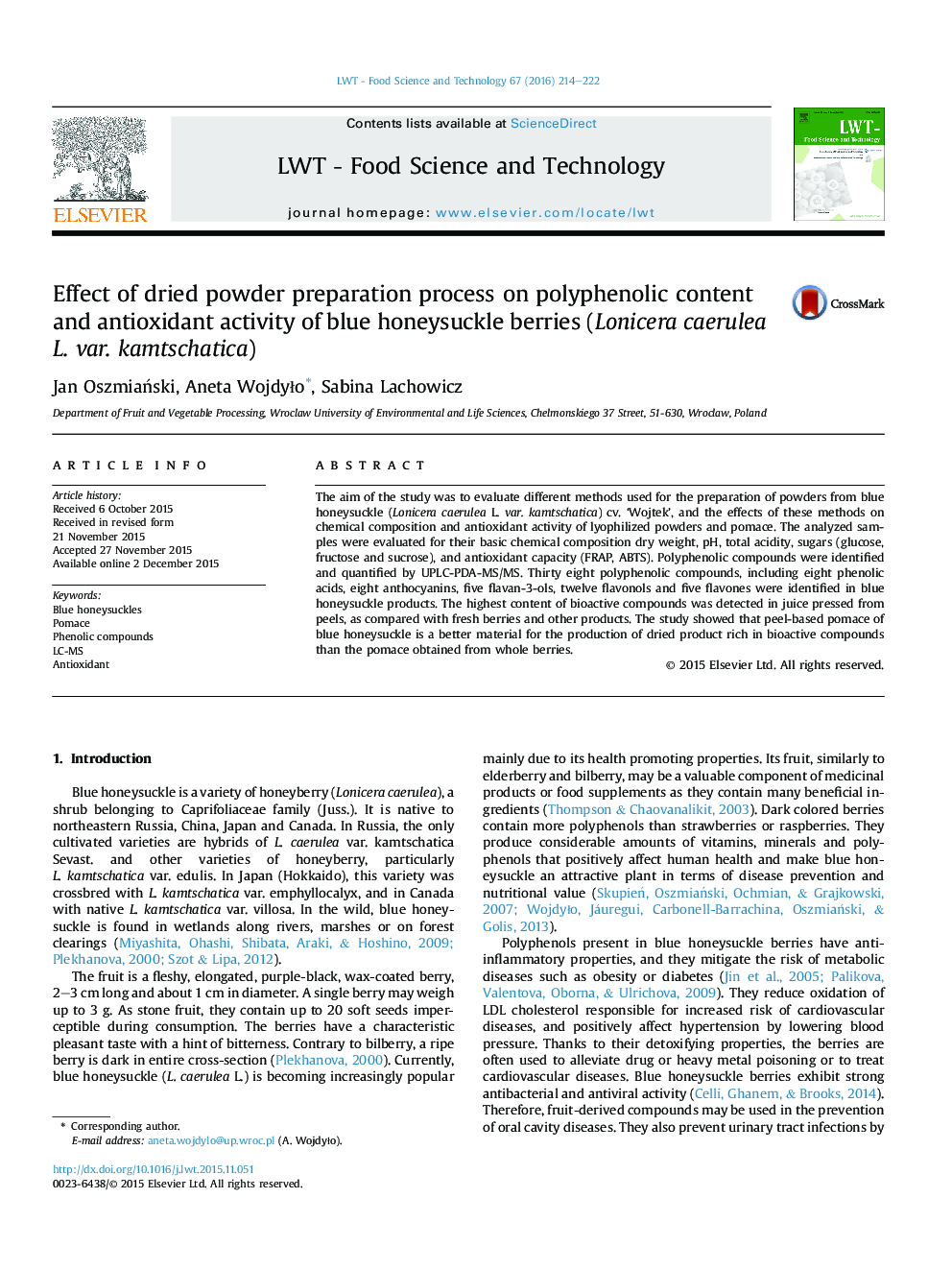| Article ID | Journal | Published Year | Pages | File Type |
|---|---|---|---|---|
| 4563832 | LWT - Food Science and Technology | 2016 | 9 Pages |
•Blue honeysuckle products were characterized by a high content of bioactive compounds.•Pre-treatment of the berries significantly affected final phenolic content and antioxidant activity.•The most valuable honeysuckle product was peel-based dried pomace.•Peel-based pomace contained 4.3 times more polyphenolic compounds than fresh berries.
The aim of the study was to evaluate different methods used for the preparation of powders from blue honeysuckle (Lonicera caerulea L. var. kamtschatica) cv. ‘Wojtek’, and the effects of these methods on chemical composition and antioxidant activity of lyophilized powders and pomace. The analyzed samples were evaluated for their basic chemical composition dry weight, pH, total acidity, sugars (glucose, fructose and sucrose), and antioxidant capacity (FRAP, ABTS). Polyphenolic compounds were identified and quantified by UPLC-PDA-MS/MS. Thirty eight polyphenolic compounds, including eight phenolic acids, eight anthocyanins, five flavan-3-ols, twelve flavonols and five flavones were identified in blue honeysuckle products. The highest content of bioactive compounds was detected in juice pressed from peels, as compared with fresh berries and other products. The study showed that peel-based pomace of blue honeysuckle is a better material for the production of dried product rich in bioactive compounds than the pomace obtained from whole berries.
